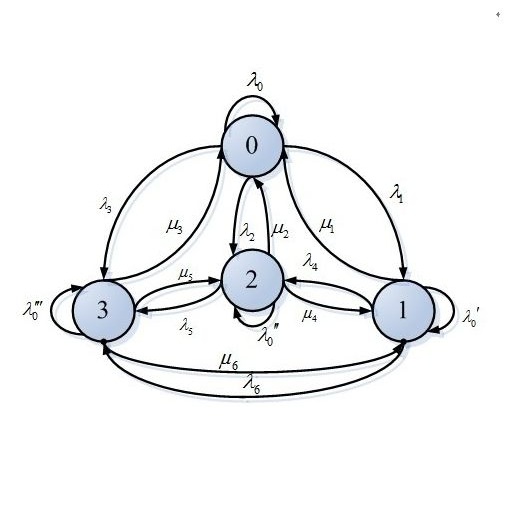Distributed quantum applications impose requirements on the quality of the quantum states that they consume. When analyzing architecture implementations of quantum hardware, characterizing this quality forms an important factor in understanding their performance. Fundamental characteristics of quantum hardware lead to inherent tradeoffs between the quality of states and traditional performance metrics such as throughput. Furthermore, any real-world implementation of quantum hardware exhibits time-dependent noise that degrades the quality of quantum states over time. Here, we study the performance of two possible architectures for interfacing a quantum processor with a quantum network. The first corresponds to the current experimental state of the art in which the same device functions both as a processor and a network device. The second corresponds to a future architecture that separates these two functions over two distinct devices. We model these architectures as Markov chains and compare their quality of executing quantum operations and producing entangled quantum states as functions of their memory lifetimes, as well as the time that it takes to perform various operations within each architecture. As an illustrative example, we apply our analysis to architectures based on Nitrogen-Vacancy centers in diamond, where we find that for present-day device parameters one architecture is more suited to computation-heavy applications, and the other for network-heavy ones. Besides the detailed study of these architectures, a novel contribution of our work are several formulas that connect an understanding of waiting time distributions to the decay of quantum quality over time for the most common noise models employed in quantum technologies. This provides a valuable new tool for performance evaluation experts, and its applications extend beyond the two architectures studied in this work.
翻译:分配量子应用程序要求它们消费的量子状态的质量。 当分析量子硬件的架构实施时, 定性质量是了解其性能的一个重要因素。 量子硬件的基本特性导致国家质量和传统性能衡量标准( 如吞吐量)之间的内在权衡。 此外, 量子硬件的任何现实世界实施都显示出时间性噪音, 随着时间的推移会降低量子状态的质量。 在这里, 我们研究两种可能将量子处理器与量子网络连接起来的架构的性能。 首先, 与同一设备作为处理器和网络设备运行的艺术的实验性状态相对应。 第二个量子硬件的基本特性导致国家质量质量和传统性能衡量标准之间的内在权衡。 我们将这些结构建模为Markov 链, 比较它们执行量子操作的质量, 并产生量子状态的纠缠在一起, 以及它在每个结构内进行各种操作操作的时间。 举例来说, 我们运用我们的分析将基于Nitrogen- Vacancycreal 的架构扩大了在钻石中运行的模型, 我们发现, 用来将这个常规性模型的精度模型用于 一种常规结构的计算, 一种更适合的 一种常规结构的模型。



